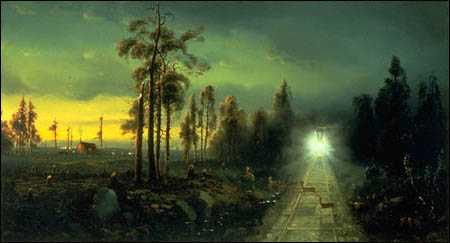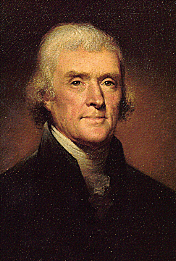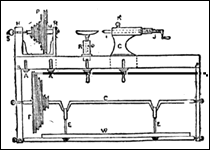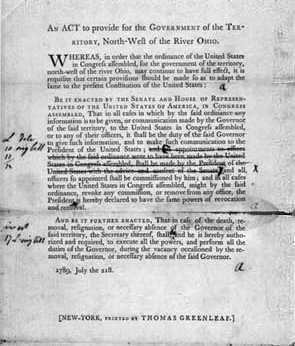19th-Century American Environmental History
University of Oregon
Winter 2002 Syllabus


Winter 2002 CRN 24901/24902
Matthew Dennis
Department of History, University of Oregon
Class: 221 Grayson Hall, 2:00-3:20,
Tu/Th
Office Hours: W: 9-11:30 ; 357 McKenzie [formerly Grayson]
Hall
mjdennis@darkwing.uoregon.edu
Mike Sims, Graduate Teaching Fellow
Environmental Studies
Office Hours: W: 3-4; 6 Pacific Hall
msims@darkwing.uorgeon.edu
Course Description
As white Americans proceeded to define
and construct their new nation in the 19th century, they continued a
process they had initiated as colonists, settling a "New World," and
transforming its landscape, which had previously been molded by
American Indians. Simultaneously, that landscape, natural and
colonial, profoundly affected postcolonial United States. This course
examines the complex dialogue-material and discursive-between nature
and culture in the United States during the 19th century. It will
focus on the complicated links between material circumstances,
mentality, ideology, and power, which affected the physical context
of the American environment and the changing experience of American
life.
And that context and experience changed dramatically, as the 19th century saw the continental expansion of the United States, a transportation revolution, the advent of a national market economy, industrialization, astonishing population growth and urbanization, and the emergence of unprecedented environmental problems, including exhaustion of natural resources and deterioration of quality of life in American cities.
Readings, lectures, and discussions will consider the following topics: Native American cultures and ecology in the age of western expansion; American slavery and its landscape of exploitation; white Americans' confrontations with the western landscape and the ideas of "nature," "wilderness," "frontier," and "progress"; American agriculture, industry, and urbanization, and vital links between the city and countryside; recognition of and early responses to the problems of urban pollution; cultural and scientific trends and their relation to the exploitation, appreciation, conservation, or preservation of the American landscape.
Format and Requirements
This course will combine lecture with
discussion, often weaving the two together to make class sessions
interactive. Lectures will generally build upon, not simply
recapitulate, readings. Students are responsible for completing
reading and written assignments by the time indicated on the
syllabus. These assignments will often provide the basis for class
activity; students are expected to attend all class meetings and
participate actively. Except in extraordinary circumstances, no work
will be accepted late. Students must complete all assignments in
order to pass the course. Grades will be assigned according to
students' performance on the following:
Academic integrity is important. I will hold all students to the UO "Standards of Conduct." Plagiarism will not be tolerated; all work must be your own, written for this class.
Required Books
These books are available at Mother Kali's Books, 720 East 13th Avenue (343-4864), two blocks from campus. Additional primary source readings will be available on the web.
Unit One: Early National
Landscape What do we mean when we speak of
the "American environment"? What is it? Where is it? Does it
have a history? This unit will begin with these basic
questions and investigate the early national period, when
the United States was being invented, not just politically
but spatially and materially. What was the environmental
impact of the American Revolution and Independence? How did
Americans shape their natural environment in accordance with
their political, social, and economic dreams? How did that
environment offer opportunities and constraints?

January 8 (Tu)--Introduction; What is
environmental history? Why the 19th century?
Reading: Major Problems, 1-14.
January 10 (Th)--the Early National American
landscape.
Reading: Major Problems, 94-95, 103-31; Virginia D. Anderson,
"King
Philip's Herds": Indians, Colonists,
and the Problem of Livestock in Early New England," William and
Mary Quarterly, 3d ser., LI (1994), 601-24.
Essay Assignment: Late colonial and early
national America was understood to be a land of opportunity. Who
(generally) was able to realize that opportunity? How was that
economic opportunity based in America's natural environment? Draw on
the assigned reading in Major Problems, and write a short
essay (no more than 500 words-about two typed, double-spaced pages)
that assesses how the American environment contributed to economic
opportunity for some (perhaps at the expense of others). Due in class
Thursday, January 10.
[Remember: this is an essay, not a research paper. Analyze your
sources and make (and support) a particular point in response to the
question; do not expect to be comprehensive-you have only two
pages.]
January 15 (Tu)--Agriculture and
"Improvement" in the Northeast.
Reading: Major Problems, 133-69.
January 17 (Th)--An Agrarian Republic?
Nature and American Ideology.
Reading: Thomas Jefferson, Notes on the State of Virginia
(1785) (excerpts of Queries
VI & XIX); Northwest
Ordinance (1787); Jefferson,
"Indian
Addresses"; Joyce
Appleby,"Commercial
Farming and the 'Agrarian Myth' in the Early
Republic," Journal of American
History, 68:4 (March 1982), 831-48.
Essay Assignment: In an essay of approximately 500 words, assess the origins and implications of the so-called Agrarian Myth. Due in class January 17.
Unit Two: Commerce and
Industrialization The formation of the United States
unleashed tremendous economic energy. Beginning in the 1790
and accelerating in the 19th century, the economy expanded
and was transformed as the country itself grew. A national
market economy emerged, tied together by a transportation
network, the result of a transportation revolution in the
early national period. The economy increasingly featured new
forms of manufacturing and industrial organization, which
altered the nature and quality of people's experience, their
conceptions of place and space, and their impact on their
physical worlds. Wealth in the United States grew
astoundingly, and for many the standard of living rose
steadily. Yet these benefits were accompanied by costs--for
some, dislocation, decline in status, increasing dependency;
for the natural environment, degradation, exhaustion of
resources, pollution. Why and how did the United States
favor the economic, social, legal, and political innovations
that underwrote early commercial and industrial development?
What was the environmental impact of such development? The
answers, of course, are complicated. We seek them in this
unit's readings and discussions.

January 22 (Tu)--Market Revolution and
Economic Development.
Reading: Steinberg, Nature Incorporated, 1-95.
January 24 (Th)--Early Industrialization of
New England.
Reading: Steinberg, Nature Incorporated, 99-165.
Essay Assignment: The famous English jurist William Blackstone wrote in 18th century: "water is a moveable, wandering thing, and must of necessity continue common by the law of nature; so that [one] can only have a temporary, transient, usufructuary property therein." Write a 500-word essay that explains how early American industrialists successfully challenged such a common law understanding. How and why were they able to assert new property rights to water, which seem at odds with democratic values? What are the environmental implications of this development? Due in class January 24.
January 29 (Tu)--Depleted and Fouled
Waters.
Reading: Steinberg, Nature Incorporated, 166-239.
"Pollution
of the Nashua River,"
1877.
January 31 (Th)--Triumph of American
Industrialization.
Reading: Steinberg, Nature Incorporated, 243-71.
Essay Assignment: Despite some notable exceptions, most Americans continued to support industrial development and seemed largely unconcerned by real and potential environmental problems. Write an essay (approximately 500 words) that assesses Americans' commitment to "progress" through the control, manipulation, and exploitation of the environment. Due in class January 31.
Unit Three: Westward
Expansion: Conquest, Extraction, Transformation Before the American Revolution,
white Americans were largely confined to the Atlantic
coastal plain and piedmont. The successful formation of the
United States inaugurated an unprecedented westward
expansion. By 1830, about 3 million people--more than
quarter of U.S. population--lived west of Appalachians; by
1840, over 5 million, or more than one-third of U.S.
population. By 1860, the United States possessed all of the
territory that later formed the 48 contiguous states; about
half of the nation's 31.4 million people west of Appalachian
mountains. Why did such expansion occur? Was it inevitable,
a function of some "manifest destiny"? What were the
consequences--human and environmental--not merely in the
West but in the East, not merely in the countryside but in
cities? This unit will examine the geographic expansion of
the United States, its causes, and its human and
environmental impacts.

February 5 (Tu)--an "Empire of Liberty"? The
West as Destiny and Ideology.
Reading: Major Problems, 247-85.
February 7 (Th)--Winning and Losing the
Trans-Mississippi West.
Reading: Major Problems, 286-323, 345-47.
Essay Assignment (revised): in a short essay (approximately 500 words), place the Homestead Act of 1862 in historical perspective. Specifically, how did the Act reflect or enhance prevailing U.S. attitudes toward the environment and westward expansion? Due in class February 7.
February 12 (Tu)--"Natural Resources,"
Extraction, and Exhaustion.
Reading: Major Problems, 338-50.
February 14 (Th)--Oregon and the
Northwest.
Reading: Robert Bunting, The Pacific Raincoast: Environment and
Culture in an American Eden, 1778-1900 (Lawrence: University of
Kansas Press, 1997), "Transforming the Forests," 135-58. This
selection is on e-reserve
.
Essay Assignment: in an essay of approximately 500 words, provide an historical analysis of the concept "natural resource." Define the term and assess 19th-century Americans' understanding of it, particularly through an analysis of how they treated the environments of the American West. Did Americans show concern over potential environmental limits or exhaustion of resources? Why or why not? Due in class February 14.
Unit Four: Nature's
Metropolis Environmental history too often in
the past has neglected urban areas, focusing instead on
wilderness. Yet cityscape is as essential as wild landscape
in the environmental history of the United States,
particularly because the two are intricately related.
Westward expansion proceeded not to sever connections with
the East and its commercialized and increasingly
industrialized environment but to extend such connections,
bringing new regions into a larger, national economic arena.
This unit will use William Cronon's work on Chicago and its
emergence as a center for a Great West periphery as a case
study to explore the environmental implications and
consequences of urban development in 19th-century
America.

February 19 (Tu)--19th-Century Urban
Landscapes.
Reading: Cronon, Nature's Metropolis, 1-93.
February 21 (Th)--Chicago and the Great
West.
Reading: Cronon, Nature's Metropolis, 97-259.
Essay Assignment: In an essay of approximately 500 words, assess the relation between Chicago and its hinterlands and the impact of that relationship on the mid-continental landscape and economy. To focus your essay, concentrate on one of the following commodities: grain, lumber, or meat. Due in class February 21.
February 26 (Tu)--Urban Environmental
Problems: Smoke, Waste, Pollution, Health.
Reading: Cronon, Nature's Metropolis, 263-369.
February 28 (Th)--Urban Reform and its
Limits.
Reading: Major Problems, 414-42.
Essay Assignment: In an essay of approximately 500 words, assess the environmental problems of late 19th-century American cities, how such problems were addressed, and the success or limitations of solutions proposed and adopted. Due in class February 28.

In this unit, we look more broadly at American culture and its dialogue with nature in the 19th century. How did Americans understand their natural world and regard the transformations that economic development wrought? Was America "Nature's Nation"? If it was a new Eden, what were the implications of introducing machines into this Garden? If most Americans expressed enthusiasm for economic development and environmental transformation, did any articulate concern or anxiety? Here we study a 19th-century minority opinion-that Nature might have some intrinsic value, that it might merit conservation, even preservation. Through an examination of art and literature, especially American landscape painting and the writings of Emerson, Thoreau, Muir and others, we will trace the origins of American environmentalism-itself a complex, changing, sometimes amorphous phenomenon.
March 5 (Tu)--Nature's Nation.
Reading: Major Problems, 170-208; Thoreau, Walden, 1-54
("Economy").
March 7 (Th)--Machine in the Garden.
Reading: Thoreau, Walden, 55-67 ("Where I Lived, and What I
Lived For"), 75-134 ("Sounds," "Solitude," "Visitors," "The
Bean-Field," "The Village," "The Ponds").
Essay Assignment: In an essay of approximately 500 words, assess Thoreau's critique of 19th-century American economic culture. Due in class March 7.
March 12 (Tu)--Nature and Science.
Reading: Thoreau, Walden, 140-49 ("Higher Laws"), 170-223
("Former Inhabitants; and Winter Visitors," "Winter Animals," "The
Pond in Winter," "Spring," "Conclusion"); Major Problems,
338-42 (review).
March 14 (Th)--Conservation and
Preservation.
Reading: Major Problems, 347-59, 383-412; Cronon, Nature's
Metropolis, 371-85.
Essay Assignment: Although we often understand "natural" areas (both urban and wilderness parks, for example) as residual--places which have escaped the clutches of economic development--recent scholars have begun to see such places as the creations of urban people, as cultural constructions produced by and in reaction to industrialization and urbanization. In an essay of approximately 500 words, analyze this notion for the second half of the 19th century. Due in class March 14.